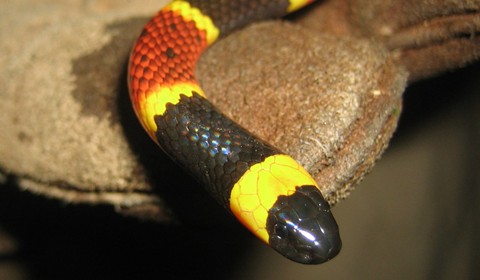
We initially didn’t quite believe the top-shelf venom prices quotes in this 1995 piece about Caucasian vipers. Upwards of $1,000 per gram just struck as too high, given the relative abundance of the most desirable species. But sure enough, the latest price list from the Kentucky Reptile Zoo proved our skepticism misplaced; a gram’s worth of poison from the fangs of an Eastern coral snake will, indeed, run your a thousand bucks. A similar quantity of venom from a Mexican bearded lizard, by contrast, is a relative steal at $600.
So why is the venom of such a common snake so expensive? We suspect it has everything to do with Wyeth’s decision to stop producing antivenin for Eastern coral snake bites. The company, now part of Pfizer, started manufacturing this much-needed remedy back in the 1960s, using horses that had been bitten. When it ceased production a few years back, Wyeth promised that stocks would last until October 2008. Now things are getting desperate as supplies are almost out—the few last vials are even getting their expiration dates extended.
We suspect the vanishing of Wyeth’s antivenin means that new treatments must be developed out of genuine coral snake venom, rather than through exposed horses. It’s thus dicier than ever to engage in certain forms of religious literalism.


“They Shall Take Up Serpents…” // Nov 3, 2009 at 12:49 pm
[…] quick mention of religious snake handling set us off on a minor research tangent. We’re accustomed to […]
Taipan Be Not Proud | Microkhan by Brendan I. Koerner // Oct 26, 2011 at 9:35 am
[…] two years ago, I posted about the exorbitant prices of anti-venom, which seem largely due to the reluctance of pharmaceutical manufacturers to service such a […]
Interview with Brendan Koerner, Microkhan – // Mar 13, 2016 at 6:53 pm
[…] through idea after idea, trying to find something that connects.” Ideas include the economics of collecting snake venom, the lesser known Choctaw code talkers and the unconventional recruitment techniques of the North […]